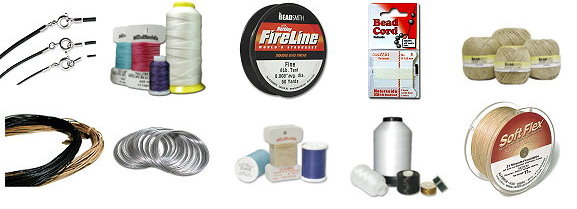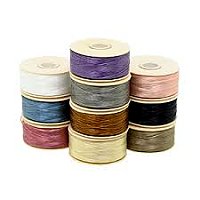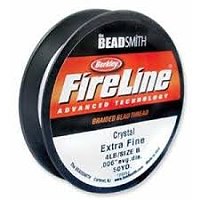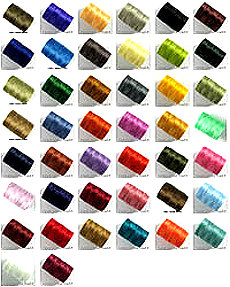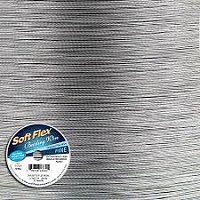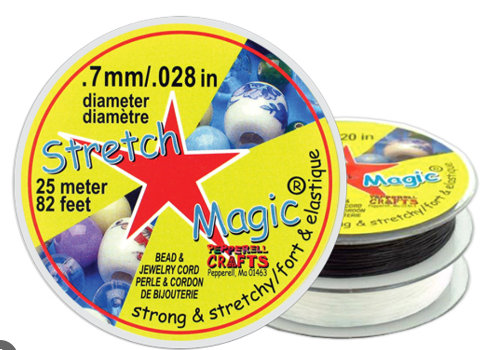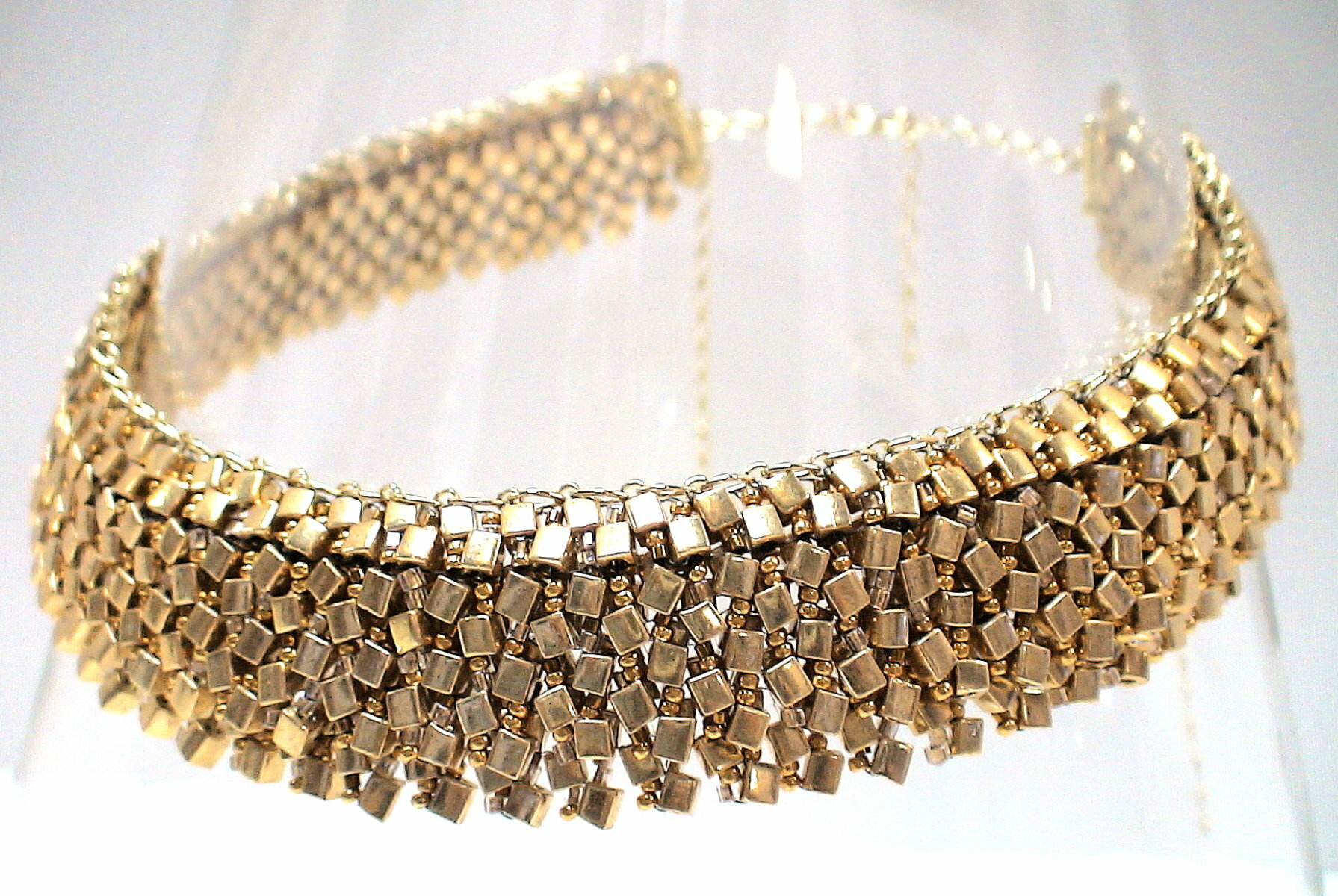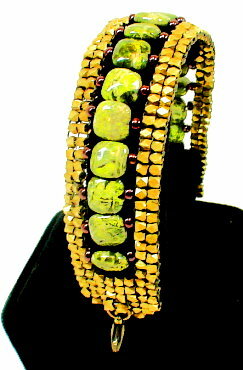Categories
Categories
- Home
- STRINGING MATERIALS
STRINGING MATERIALS
STRINGING MATERIALS at Land of Odds with Warren Feld Jewelry
Join our community of jewelry designers on our Patreon hub
Free Mini-Lesson (downloadable instructions) for new members!
STRINGING MATERIALS
There all kinds of stringing materials. Some are premium, some economy. For each one, there are many brands. I only sell my favorite(s) in each category. Also see the sections on TOOLS AND SUPPLIES Beading threads are nylon. Most are shaped like a typewriter ribbon. Most are bonded with built in abrasion resistance. If a twisted thread, then there is no built-in abrasion resistance. We suggest always waxing your threads. One-G is my favorite brand. It is very strong. It has a springy quality to it which makes it less tiring to use. When there are areas of your project that get pulled and tugged -- especially fringes -- One-G pulls everything back in place. The other beading threads do not. Also see, |
|
Cable threads are nylon beading threads twisted together and covered with a nylon sheathing. What gives this material its strength and durability is the nylon sheathing's ability to keep the braided threads from unraveling. Once the nylon sheathing is violated -- from it being to thin or too porous -- and the twisted threads are exposed to the air, they immediately unravel and break. Waxing before using it will protect the nylon sheathing. I strongly recommend the FireLine brand. Most other brands are either more awkward to use, or they have significant deficiencies with the nylon sheathing. The FireLine I sell is non-biodegradable. The FireLine you buy in fishing departments or stores is biodegradable. In bead weaving, if the stitch is very tight, using FireLine might make it too tight, causing more stress and strain on both beads and the FireLine itself. If the stitch is loose, FireLine makes it much easier to control your work than using regulare beading thread. |
|
Nylon
Nylon is the modern way of bead stringing. Nylon does not fray as much, or stretch as much, as the silk. High performance nylon does not stretch. 100% real silk is the traditional way of bead stringing. I suggest using silk cords when your project is all real pearls or mostly pearls. Other stringing materials hurt the pearls. Silk tends to fray and stretch. Silk breaks down in 3-5 years, so anything strung with silk will have to be restrung. |
|
The brand I recommend is SOFT FLEX. [I only recommend one other brand - FlexRite, which I do not carry now.] Soft Flex is very supple, very strong, and with a thicker and nonporous nylon sheathing. I warn you against using any other brand. They can't compete. Cable wires are stainless steel wires twisted together and covered with a nylon sheathing. What gives this material its strength and durability is the nylon sheathing's ability to keep the braided wires from unraveling. Once the nylon sheathing is violated -- from it being to thin or too porous -- and the twisted wires are exposed to the air, they immediately unravel and break. I suggest:
|
|
The brand I recommend is STRETCH MAGIC. It's average. All elastic string deteriorates rapidly over time, and usually on lasts about 2-3 years before your project needs to get re-strung. Elastic string comes round and flat. The flat is very easily shredded by the rough holes of beads. The flat also breaks down over time into a gummy mess, filling the bead holes, and very difficult to open them up again. I suggest: Size .5mm for projects that are all 15/0 or 11/0 seed beads Size .7mm/.8mm for most all other projects. Note: the average hole size of a bead is .8mm. Size 1.0mm for projects where the beads have larger holes.
MINI LESSON: Using Elastic String To Make Stretchy Bracelets
|
|
BEAD CORDS vs. THREADS People often confuse BEAD CORDS and THREADS. Beading Threads are very thin ribbons, and are meant to be fully covered with beads, thus hidden within your pieces. They are typically waxed with beeswax to keep them from fraying. Threads, once waxed, are actually stronger and more durable than bead cords, but they are unsightly. Threads are used in both bead weaving and bead stringing projects. Beading Cords are threads that are braided together, to make them visually attractive. But you don't wax bead cords -- this would make them ugly. So bead cords will have problems of fraying and stretching that waxed threads will not. Bead Cords are used for projects where you want the cord to show, like putting knots between beads, or tin cup necklaces where you have a cluster of beads, then a length of cord showing, and then another cluster of beads, then the cord, and so forth. |
|
ETRUSCAN SQUARE STITCH BRACELET KIT
|
 Loading... Please wait...
Loading... Please wait... 